Do bedroom curtains and bedding need to match? The experts all agree on this approach
To match or not to match, that is the question. (And luckily we have the answers!)
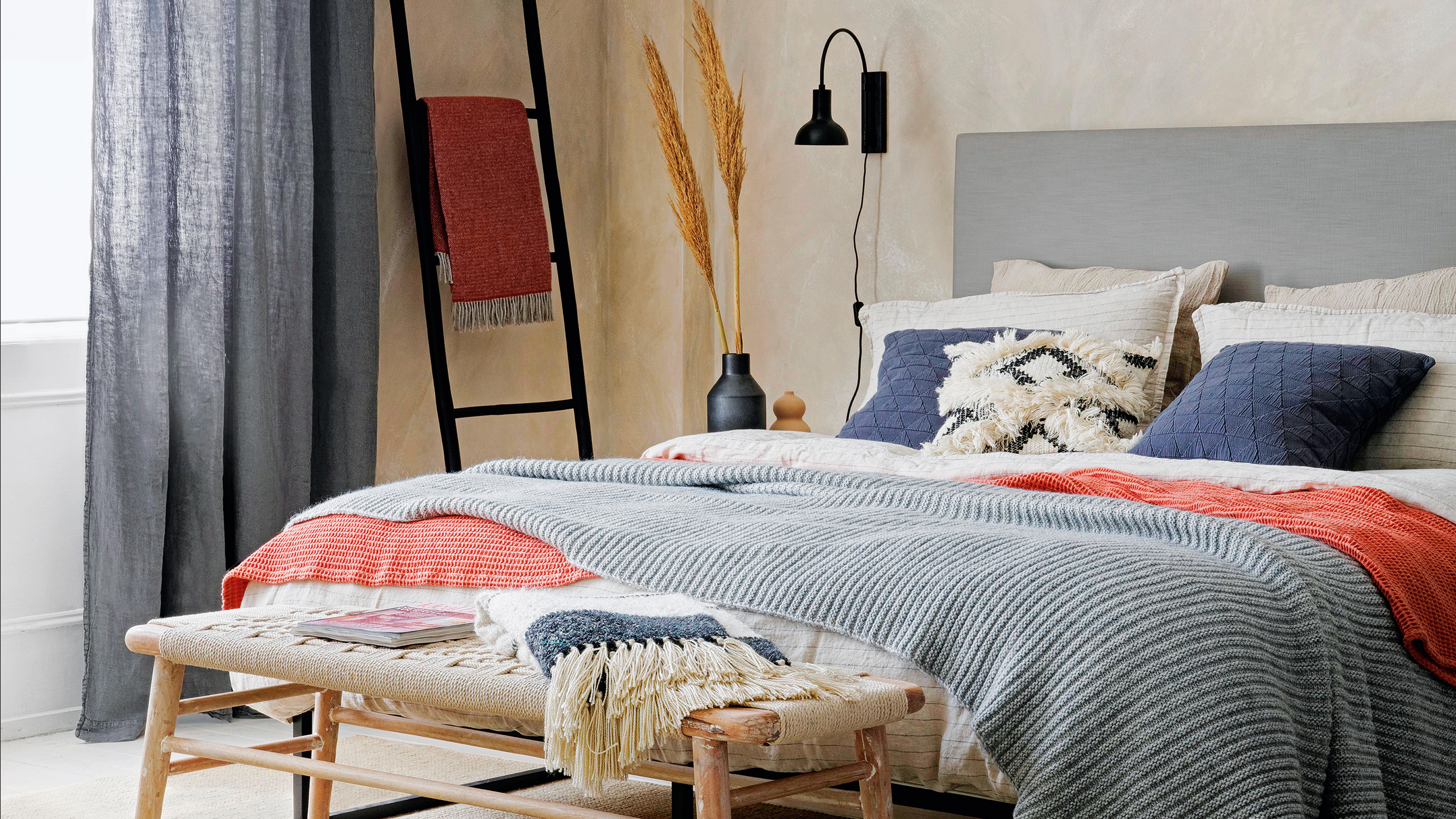

Pulling a bedroom scheme together isn't always easy. Some of us want our bedrooms to be a calming sanctuary to relax and unwind in, with muted colours and layered textures, while others want bright colour and pattern to invigorate and reflect our bold personalities. But the question do bedroom curtains and bedding need to match is relevant to all of us and the answer isn't exactly straightforward.
When looking for bedroom curtain ideas it's a good idea to opt for a design that compliments the rest of your room. But how matchy-matchy should you go? There are so many choices of curtains these days that it can be a little overwhelming knowing where to start. So perhaps choosing a pair that matches your bedding is a good place to start, but what happens when you want to change things up?
We've spoken to the industry experts to get their take on do bedroom curtains and bedding need to match, and ultimately it seems the answer is yes... to a degree. Read on to find exactly how to go about it to ensure a perfectly dressed bedroom, without the space becoming too overwhelming.
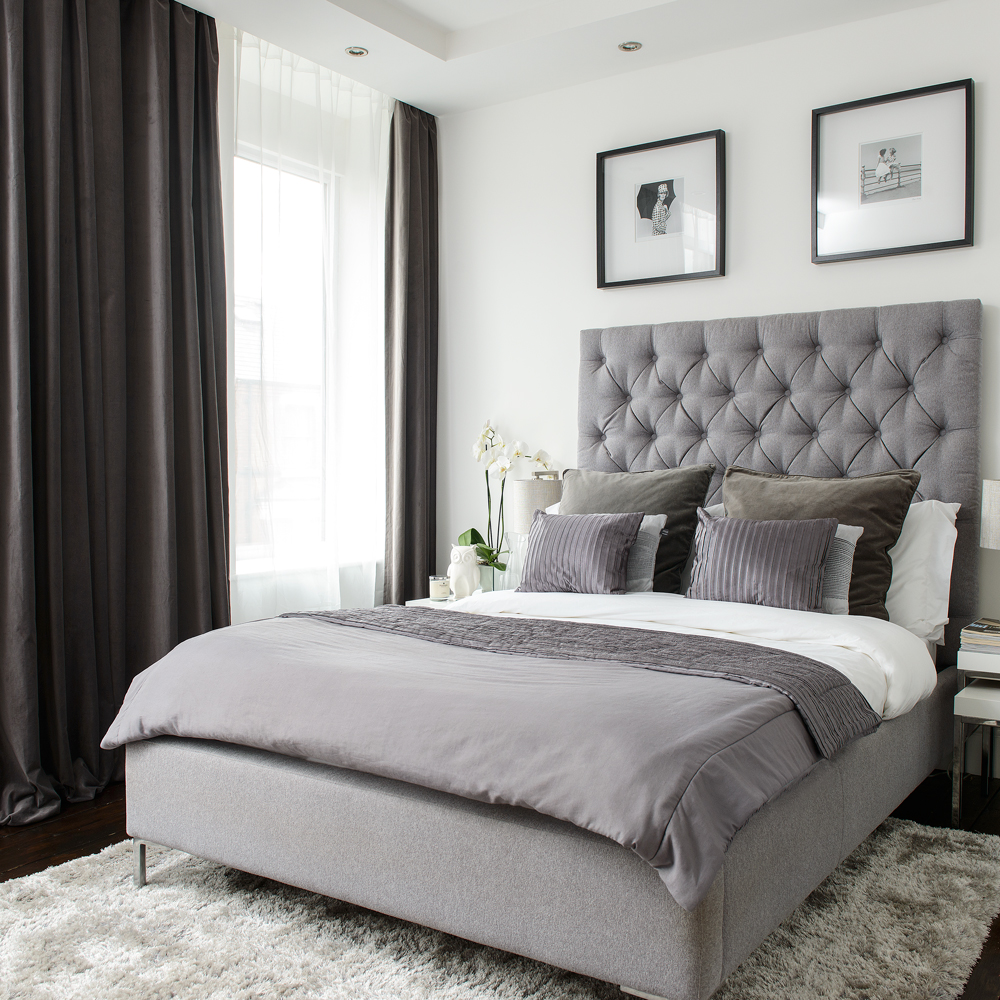
What does it mean to match curtains and bedding?
When we talk about bedroom curtains and bedding needing to match, we don't always mean exactly, as Emma Deterding, founder and creative director at Kelling Designs explains.
'By matching your curtains and bedding, you can create a cohesive design that’s easy on the eye. This match is about using colours, patterns and textures that coordinate between the two textile elements, whether it’s having the same fabric for both, using complementary shades in the same colour palette, or repeating patterns that tie together.'
'It’s a really great way to create a harmonious design that's a coordinated look, making the room feel intentional. By having colours and patterns that flow, it can create a sophisticated and elegant feel, all whilst making the design decisions easier.'
Helen Ashmore, Head of Design at Laura Ashley agrees, 'When looking for calming and tranquil bedroom ideas, coordinating your bedding and curtains can help create a cohesive, well designed space. This approach creates a sense of confidence in your use of prints and patterns, making the room feel thoughtfully curated.'
Get the Ideal Home Newsletter
Sign up to our newsletter for style and decor inspiration, house makeovers, project advice and more.
But if you're wondering about whether you could match your bedroom curtains to your bedding exactly, Saffron Hare, Managing Director at James Hare comments. 'Matching curtains and bedding is a very specific look but can create a very cosy bedroom if the fabrics and colours chosen are not overpowering.'
'Very large bedrooms can take scale of colour and pattern to create a look that’s very dramatic. However, it’s important to match scale to the size of room and also consider which bedroom is being decorated whether for a child, a guest or the master bedroom as this will influence design decisions. The other key factor is how much external light the room has as this can affect your design choice too.'
What are the benefits of matching curtains with bedding?
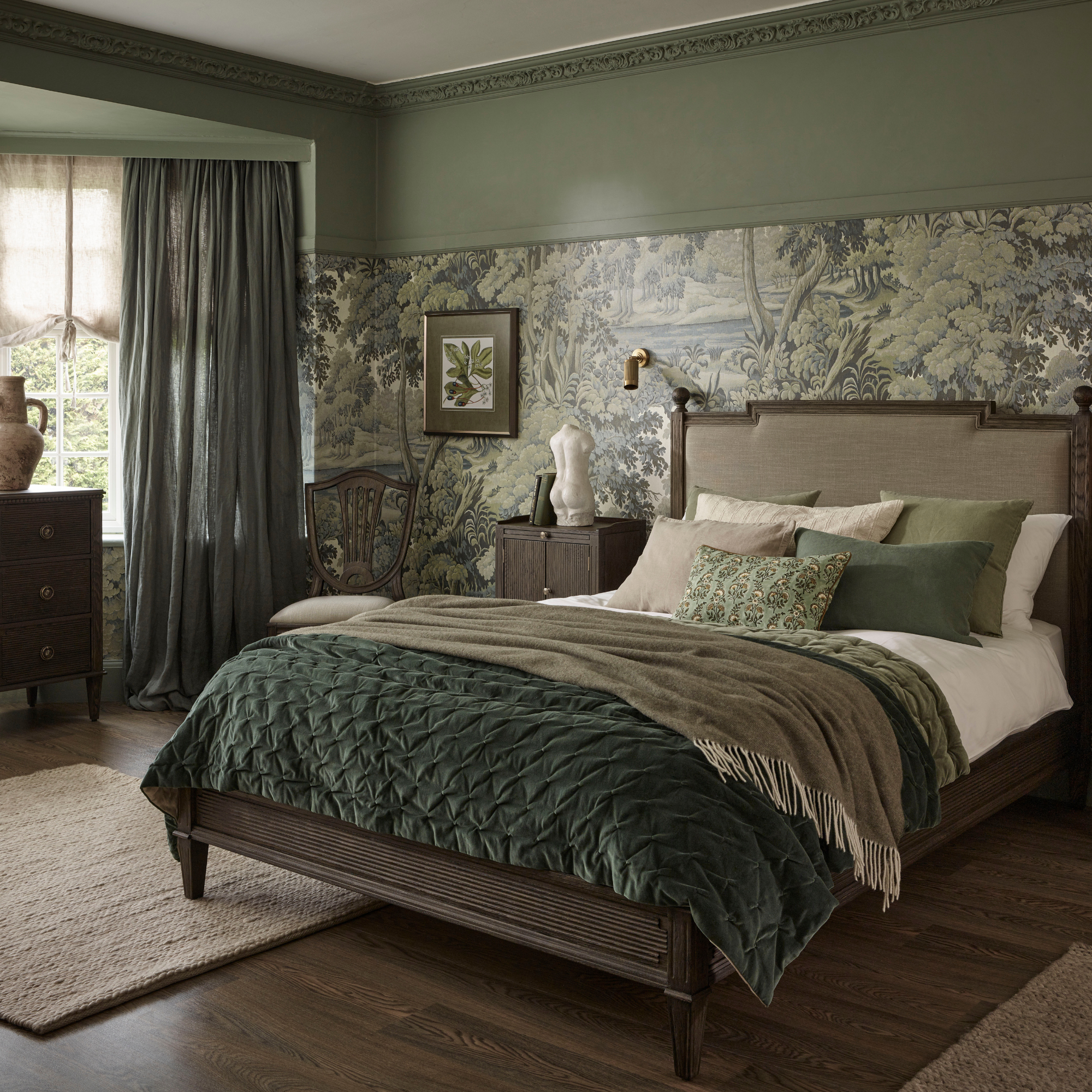
'Matching curtains with bedding offers several benefits,' explains Saffron. 'It creates a cohesive and harmonious look, which can enhance the overall aesthetic of the room. This approach can be particularly appealing in spaces like nurseries or young children's rooms, creating a unified and coordinated design or in guest bedrooms.'
Helen agrees, 'Matching your curtains and bedding can significantly enhance the overall feel of the room, creating a neat, harmonious space that feels considered. It also helps to establish a clear theme within your bedroom. Using a print like Laura Ashley’s Pussy Willow brings a serene and relaxed modern country feeling within your room.'
'By contrasting your curtains to your bedlinen, you can deliver the art of mixing prints with the bedroom. This can create a lively and visually interesting environment. To do this successfully, ensure the patterns share a similar colour palette, and vary the scale of the prints to achieve a layered, balanced look.'
Georgia Metcalfe, Founder and Creative Director of French Bedroom adds, 'Matching curtains with bedding offers the advantage of creating a clean and cohesive space, extending to a harmonious and sophisticated atmosphere in the room. This coordination helps tie the space together and makes it feel more thoughtfully designed,' she explains.
What are the disadvantages of matching curtains with bedding?
While our experts agree that matching bedroom curtains and bedding brings a sense of cohesion to the space, they warn of a few disadvantages to this look too.
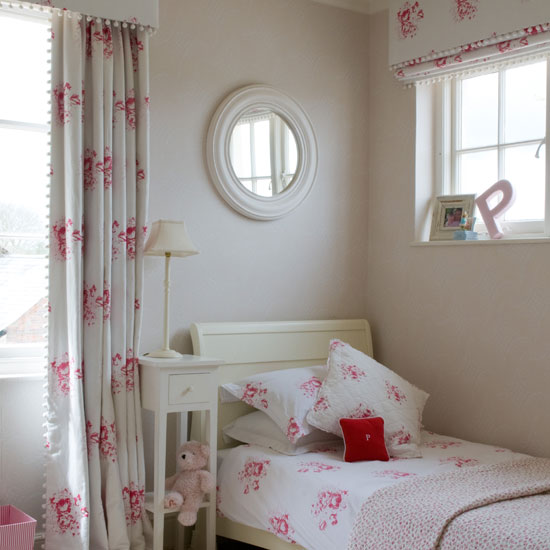
'When thinking about do bedroom curtains and bedding need to match, there are some drawbacks to consider.' says Saffron. 'Using a single fabric or design throughout the room may make the space feel monotonous or overwhelming. It could also limit the room's visual interest due to a lack of contrast in colour, pattern, or scale, which might otherwise make the space feel more dynamic and balanced.'
Emma agrees. 'You do have to be careful when opting to match your curtains and bedding, as you can run the risk of making the bedroom look too matchy-matchy, which can result in a monotonous design.'
'Another drawback is that it can reduce flexibility. By matching the bedding and your curtains, you then can’t update one without changing the other, so switching up the design seasonally can become more difficult. It can also feel restrictive from a style perspective, limiting your ability to play with your bedroom design scheme and experiment with different colours and patterns.'
Georgia warns that the look could make a small bedroom feel smaller, but offers this advice. 'A potential drawback to this design choice is that too much matching can make the room feel visually smaller, and also too predictable or overly uniform, and less considered.'
'I love finding the ’sweet spot’ between coordinating and contrasting by creating a mood board with images of patterns, colours, and textures so that I can envision the end result before I get started.'
What are the rules to follow if you do match curtains and bedding?
1. Consider scale of pattern
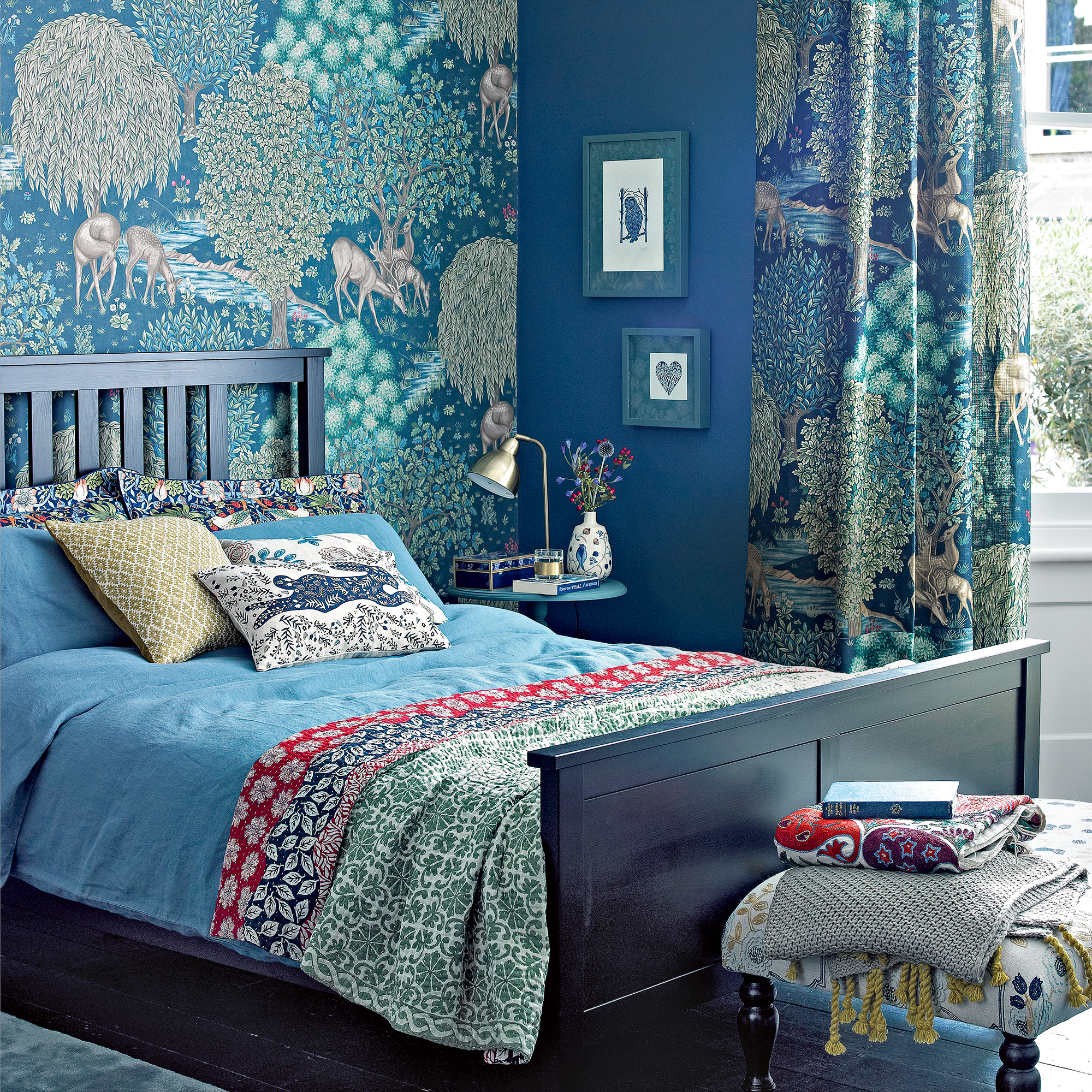
'Some helpful rules to follow when matching curtains and bedding include considering the scale of the patterns used,' advises Georgia. 'If one is bold, keep the other more subtle to prevent clashing ,eg. combine large scale prints with ditsy.'
Emma agrees, 'A great rule to follow when matching your curtains and beddings, is don’t forget that scale is so important. If you go for large, bold patterns on your curtains, then be sure to balance this out with a smaller, subtler pattern on your sheets.'
'Similarly, if you’re opting for patterns on both elements, then allow one to be bolder and the other to be more subdued to avoid overwhelming the space.'
Saffron comments that your choice of pattern should also come into consideration. 'Classic designs like pretty florals and stripes work well, either independently or as complementary elements. They offer versatility and provide opportunities to mix scales for added interest without disrupting harmony.'
Georgia adds, 'If you're not playing with scale of pattern, another rule is to mix fabrics thoughtfully, ensuring they complement each other in weight and texture.'
2. Choose a hero print or colour
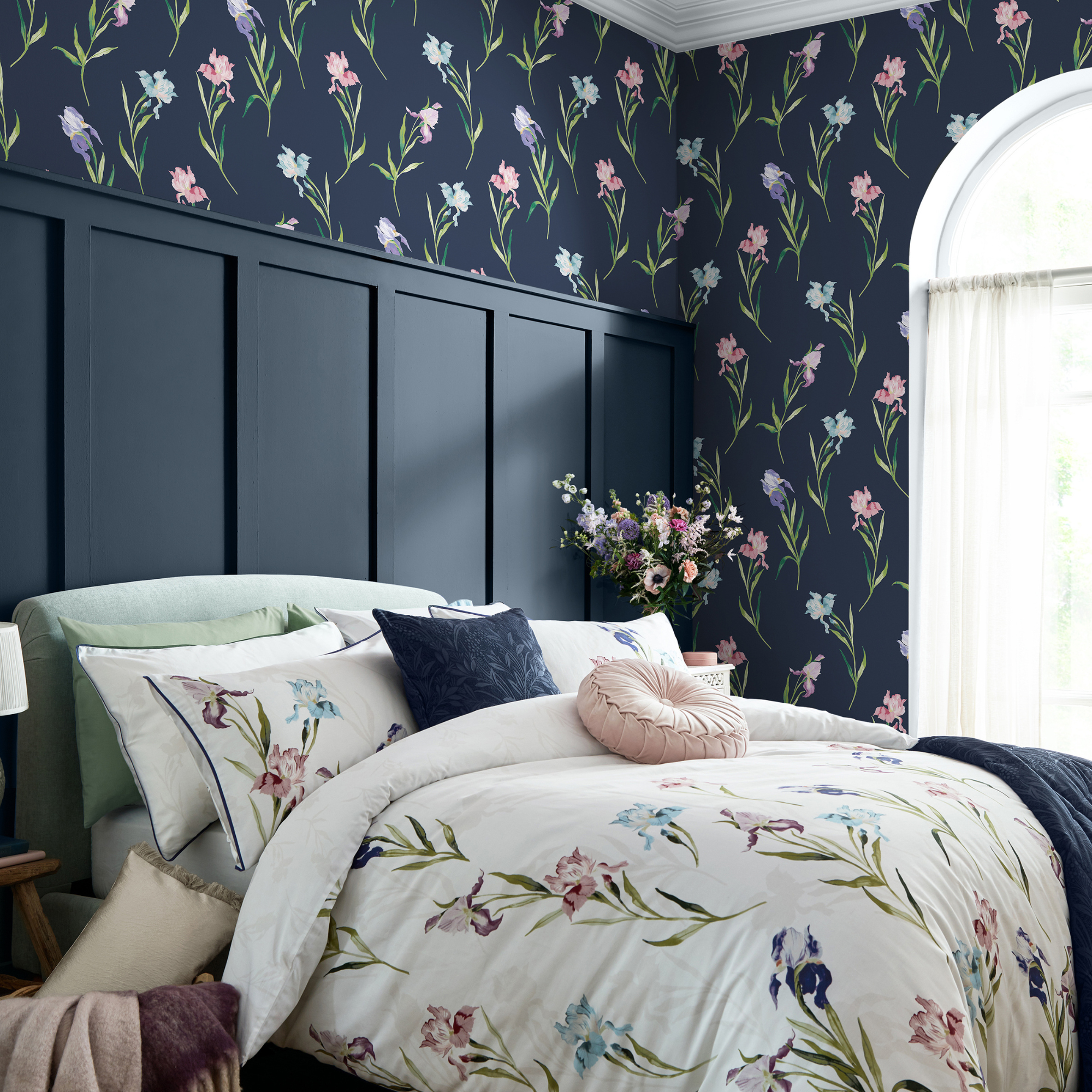
Another rule to follow when thinking about do your bedroom curtains and bedding need to match is to opt for a colour, print or pattern you love and run with it.
'Choose a standout hero print you truly love and use it consistently throughout your space,' advises Helen. 'This can either be through matching bedroom wallpaper and curtains, curtains and bedding or bedding and wallpaper.'
However Saffron advises avoiding overly busy patterns. 'Minimise visual clutter by steering clear of loud or overly complex designs that can overwhelm the space,' she says.
Emma adds, 'If you are looking to match your curtains and bedding, then choose one main colour to anchor your design and let the matching elements be the subtle compliments to bring this together.'
Saffron agrees that sticking to one tone of colour is a great rule to follow. 'Select subdued tones to maintain a calming and restful atmosphere, especially important for bedrooms.'
What are other alternatives to matching?
1. Bring cohesion with cushions
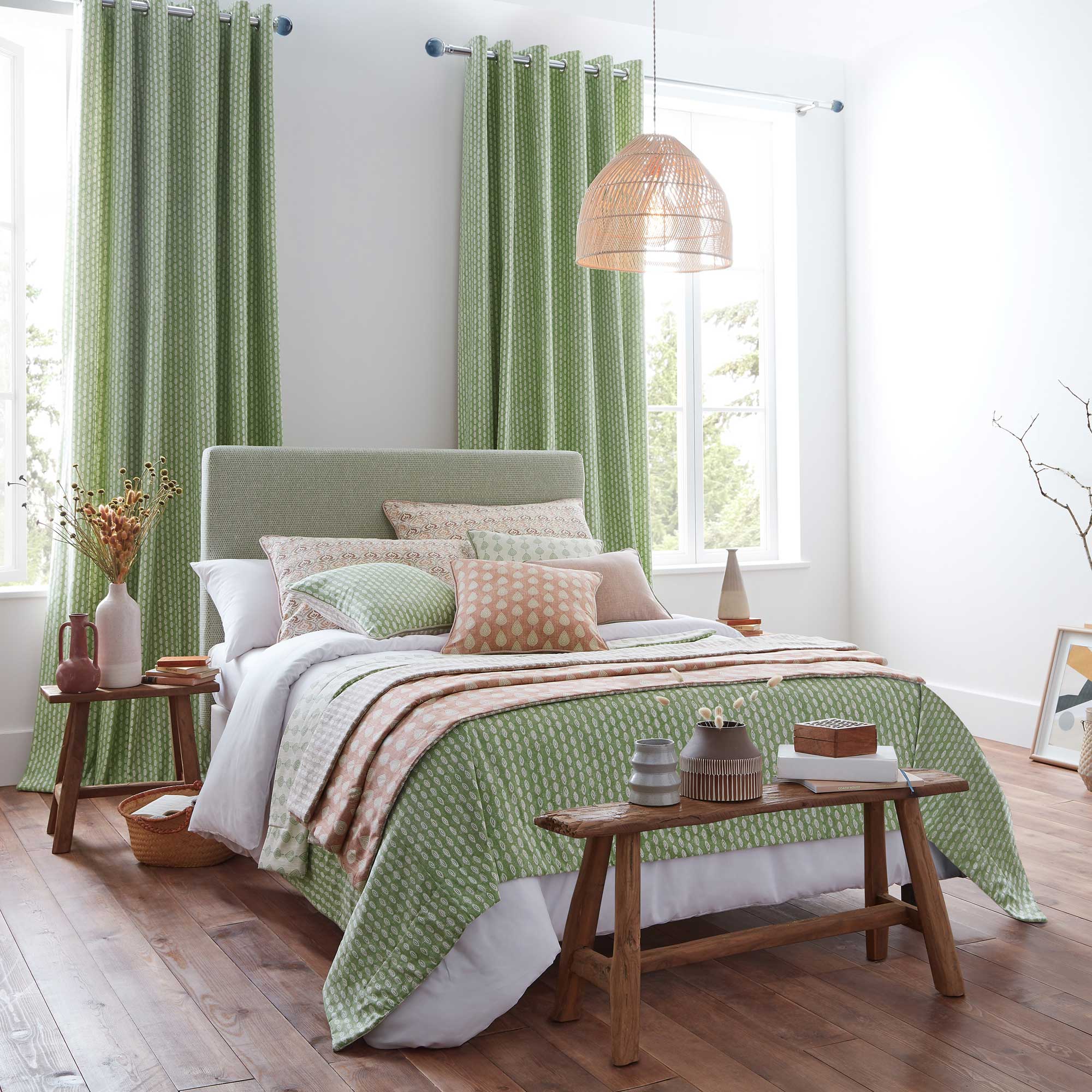
If matching your curtains to your bedding is a little too twee for your look, try bringing in cohesion via your cushions, as Emma explains.
'For me personally, nothing beats classic white bed sheets on the bed. This allows me to be bolder with the curtains, bringing in vivid colours and eye-catching patterns to make a statement. The key is to layer the bed in throws and cushions that bring out the colours of the curtains, creating cohesion in a balanced way that feels effortless and easier to live with.'
Saffron advises, 'Another option is to create contrast by introducing a bold pop of colour or striking pattern to add visual interest; for instance, you could trim plain curtains with a vibrant edge or include brightly coloured cushions among your soft furnishings.'
'Utilising contrasting colours or patterns for pelmets or curtain trims is also an excellent way to enhance the design, especially when edged with decorative trims to add a touch of colour and texture,' she adds.
2. Stick to a common colour palette
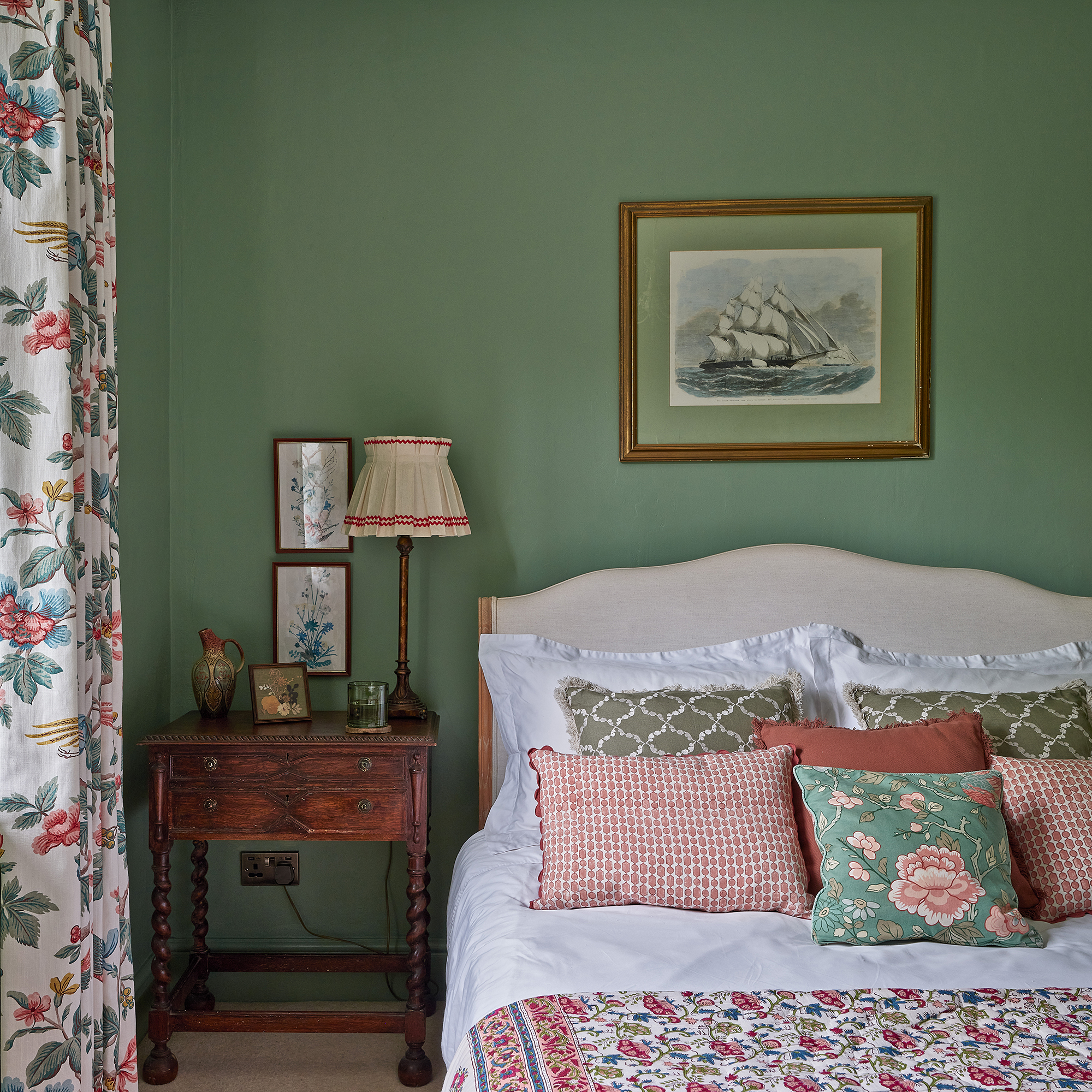
'If you're looking to mix patterns in your bedroom, anchor the designs with a common colour palette and adjust the scale of the patterns to maintain balance,' advises Helen. 'This approach ensures the space feels coordinated and avoids overwhelming the room with too many elements.'
Georgia agrees, adding 'Alternatives to matching curtains and bedding include using tonal hues to create a calm and interconnected balance. Think about using a striking colour for your bedding, to ensure the bed remains your centrepiece, whilst using a less intense tone of the same colour for your curtains. Likewise, using accents like throw pillows or rugs in coordinating colours or patterns can help unify the space.'
Saffrons comments, 'For alternatives to matching curtains and bedding, consider incorporating tonal harmony by using varying tones or shades of a colour throughout your décor, such as in cushions, braids, trims, or tiebacks, to achieve a subtle and layered effect.'
3. Opt for a focal point
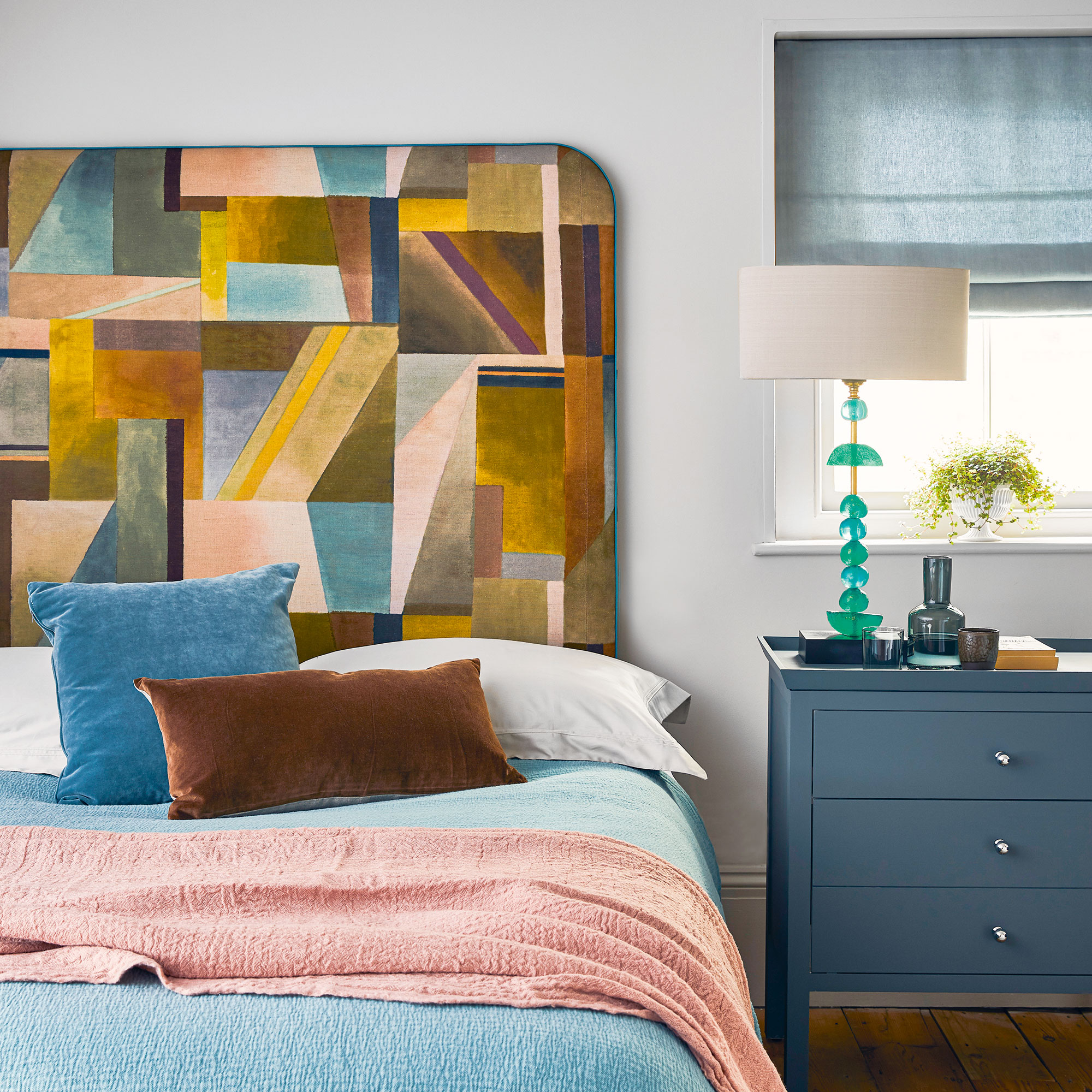
'Another alternative to matching curtains and bedding, is to decide on a focal point for the room, such as an eye-catching headboard or dramatic curtains, and design the rest of the space to complement it', advises Saffron.
Georgia recommends choosing a focal theme to tie the room together. 'Another option is to focus on a common theme, such as nature, floral or geometric shapes, tying together the elements without needing to match colours or patterns exactly.'
FAQs
What should curtains match in a bedroom?
'In a room of one’s own, curtains should complement the overall décor rather than dominate it,' says Georgia. 'By matching the curtains with the bedding, the wall colour, or texture, you create a space in which you can truly relax, unwind, and peacefully begin and end your day.'
'I love tying the design of my curtains in with accent pieces that I really adore, such as rugs and pillows. This goes a long way in helping to create a thoughtfully designed space and makes a noticeable difference, showing the careful attention and forethought that has gone into making the bedroom of your dreams.'
Saffron says, 'There are no rules for matching but if a co-ordinated effect is the plan then throws or bedspreads are an ideal way to match in with the curtains as are cushions. Upholster a chair or small sofa to match or perhaps a window seat cushion or team the valance with the curtains and keep the bedding simpler. The curtains could also match a pretty headboard. If the curtain fabric has a matching wallpaper then this is a great combination for a very dynamic result.'
Should your bedding match the walls?
Georgia says, 'Ultimately, you want to demonstrate that you’ve really thought about your overall room design. So it makes sense for your bedding to match everything in your room – in colour or style. Bedding doesn't necessarily need to match the walls, but it should complement them, using contrasting or coordinating colours can create visual interest. The bedding takes up a large volume of ‘real estate’ in your room, so should enhance the room's overall aesthetic without clashing with or overwhelming the wall colour.'
Saffron says, 'Whether your bedding should match the walls is a matter of personal preference and the overall style you want to achieve. One particularly effective approach is to pair plain bedding with a striking wallpaper on the walls, which could even extend onto the ceiling.'
'This dramatic use of pattern creates a cosy, enveloping atmosphere, especially in smaller bedrooms. Cottage-style rooms with sloping ceilings are particularly well-suited to this design, enhancing their charm and character. To add depth and interest, consider using a contrasting fabric for the headboard, incorporating additional patterns and coordinating colours to tie the scheme together.'
So with all that, we'd say that when it comes to the question do bedroom curtains and bedding need to match, our experts have shown us that matching colours and textures is a much more effective design choice than matching exactly. So will you be giving it a go in your bedroom?

Holly Walsh is a freelance Interiors Writer and Shopping Editor, but worked in-house here at Ideal Home for nearly 10 years. With a background of studies in Interior Design, her career in interior journalism was a no-brainer and her passion for decorating homes is still as strong now 15 years after she started, as it ever was. While Holly has written for most of the home titles at Future, including Livingetc, Country Homes & Interiors, Homes and Gardens, Woman & Home and Style at Home, Ideal Home has always been her ideal home, and she can still be found sharing her expertise and advice across both the printed magazine and the website, while also raising her two young children.
-
 Should an air fryer be on display in a kitchen or hidden away? This is why I always keep my small appliances on the worktop
Should an air fryer be on display in a kitchen or hidden away? This is why I always keep my small appliances on the worktopAre you on team display or neatly hidden away? Share your opinion in the comments
By Rebecca Knight
-
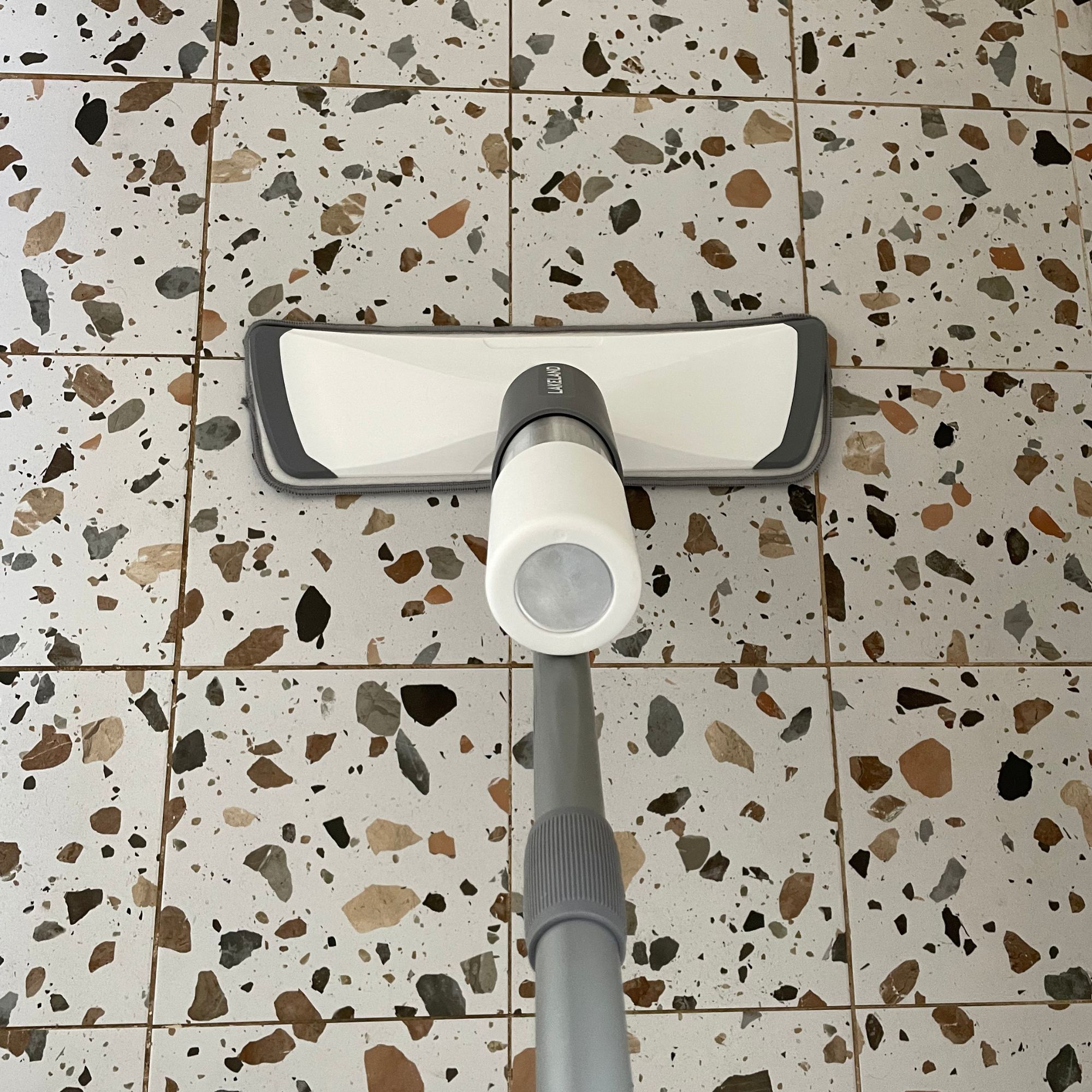 Experts warn that these 5 mopping mistakes are making your floors dirtier — and damaging your floors in the process
Experts warn that these 5 mopping mistakes are making your floors dirtier — and damaging your floors in the processThis is how to keep them clean and avoid costly damage
By Lauren Bradbury
-
 Move over, fences – dead hedges are the wild and wonderful alternative your garden will love and they're easier to build than you'd think
Move over, fences – dead hedges are the wild and wonderful alternative your garden will love and they're easier to build than you'd thinkThe perfect eco-friendly solution for small gardens
By Kayleigh Dray
-
 This beautiful mixing bowl is the unexpected star of so many kitchens – including Mary Berry's and the Bake Off tent
This beautiful mixing bowl is the unexpected star of so many kitchens – including Mary Berry's and the Bake Off tentThis earthenware bowl proves that you don't have to spend a huge amount for a classic kitchen addition
By Molly Cleary
-
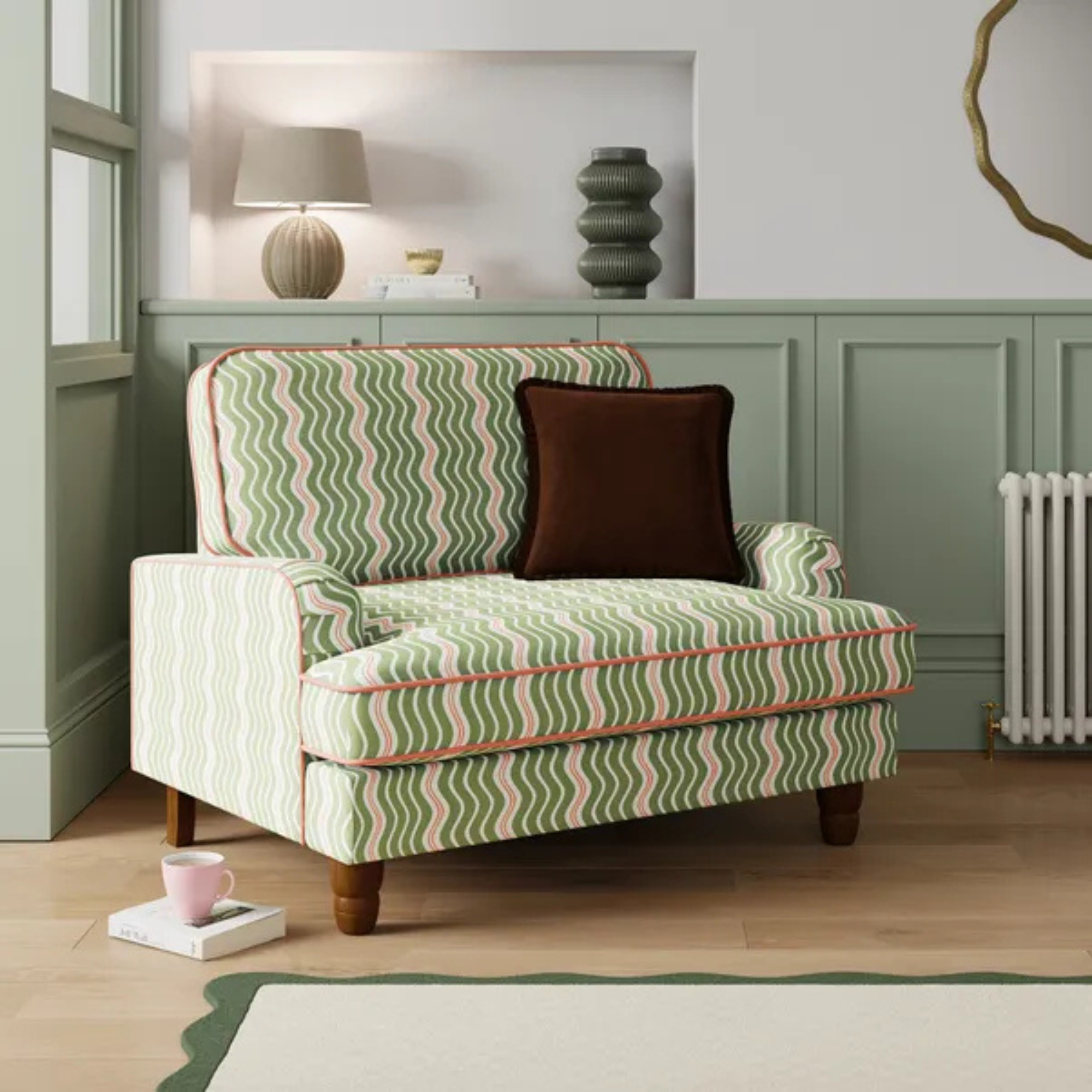 Dunelm has given its cult snuggle chair a new look - it's swapped classic stripes for another emerging pattern trend
Dunelm has given its cult snuggle chair a new look - it's swapped classic stripes for another emerging pattern trendI'm obsessed with this fresh new style
By Kezia Reynolds
-
 I tried Joseph Joseph's pan set with foldable handles – the space-saving design is just one of the many highlights
I tried Joseph Joseph's pan set with foldable handles – the space-saving design is just one of the many highlightsSmall kitchen? I tested this innovative Joseph Joseph space-savvy set which has foldable handles — and I loved it
By Annie Collyer
-
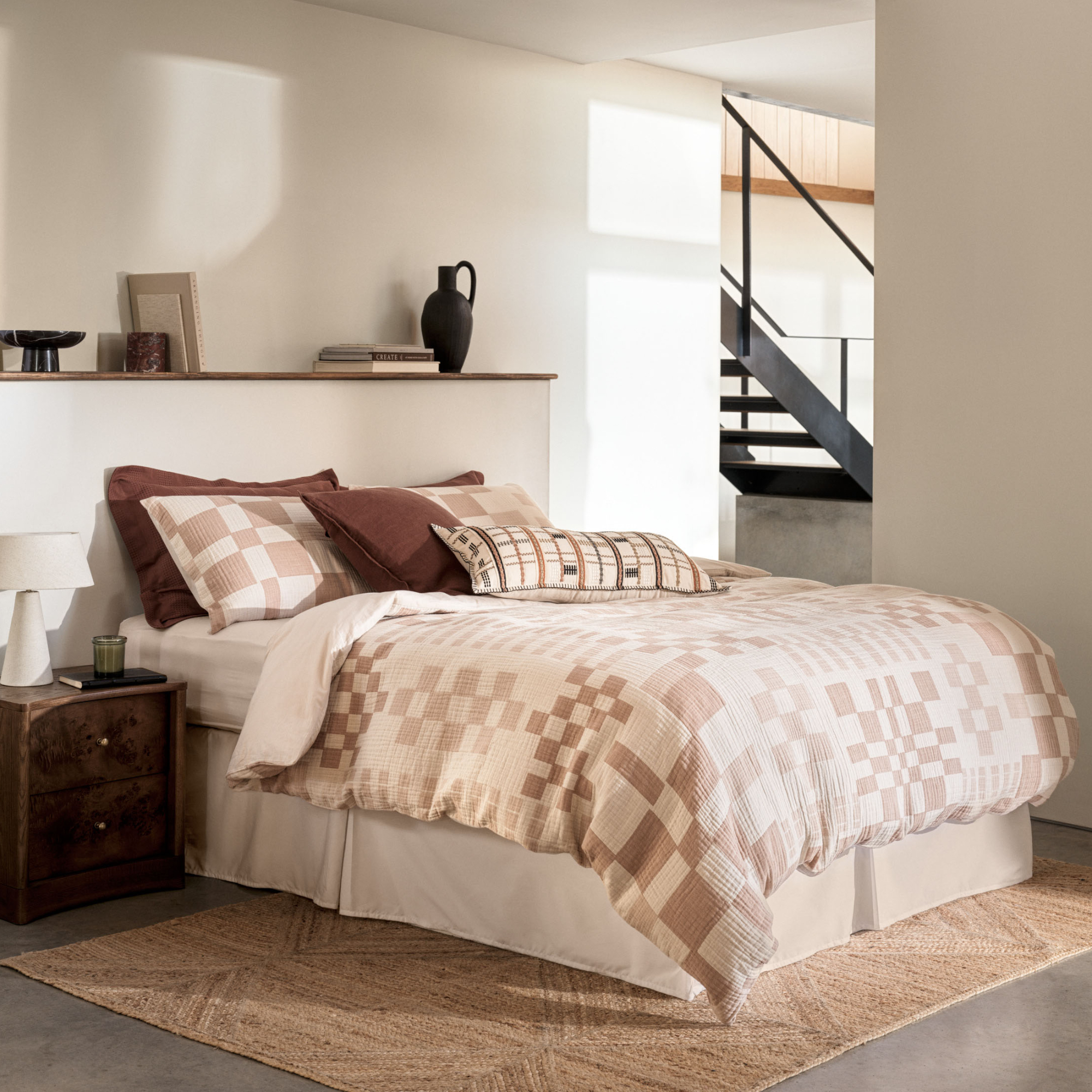 As a stylist, I spend hours looking for bedding for photoshoots, and I just spotted these 6 expensive-looking sets at M&S
As a stylist, I spend hours looking for bedding for photoshoots, and I just spotted these 6 expensive-looking sets at M&SGet a little luxury at a high-street price
By Laurie Davidson
-
 I've been waiting to try out the Ninja Slushi for months – this is what happened the first time I tried it
I've been waiting to try out the Ninja Slushi for months – this is what happened the first time I tried itThe Ninja Slushi is the stuff of dreams for summer entertaining
By Molly Cleary
-
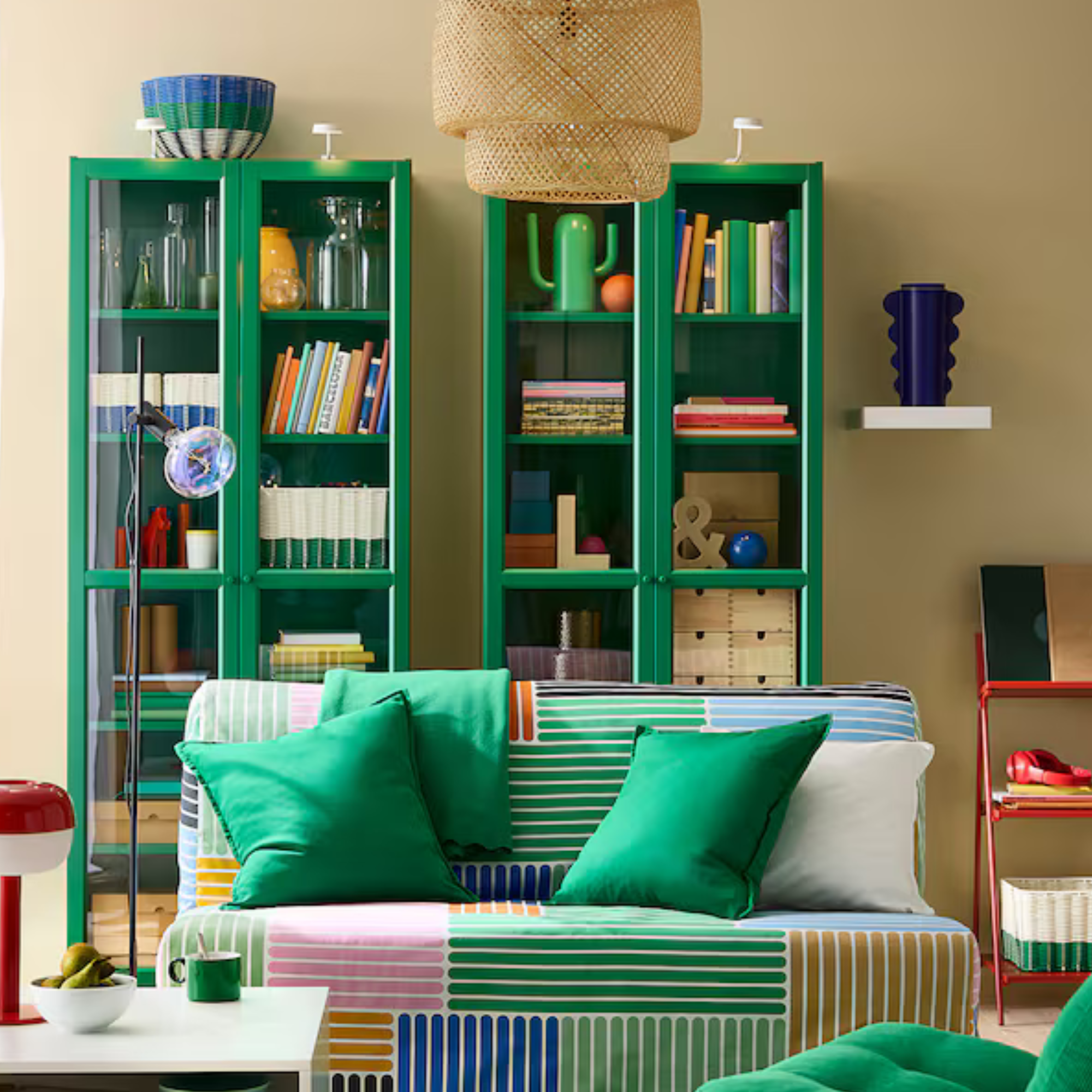 IKEA has drenched its BILLY bookcase in this year’s ‘it’ colour - but you’ll have to act fast if you want to get your hands on one
IKEA has drenched its BILLY bookcase in this year’s ‘it’ colour - but you’ll have to act fast if you want to get your hands on oneI'm obsessed with this gorgeous limited-edition colourway
By Kezia Reynolds
-
 My go-to Ninja coffee machine just had a major price drop. It's more affordable than I've seen it before
My go-to Ninja coffee machine just had a major price drop. It's more affordable than I've seen it beforeIt makes coffee shop quality achievable at home
By Molly Cleary
-
 I'm a kitchen decor editor and didn't like this tableware trend - until I saw H&M Home's designer-look plates
I'm a kitchen decor editor and didn't like this tableware trend - until I saw H&M Home's designer-look platesThey made it easy to justify a new crockery set
By Holly Cockburn